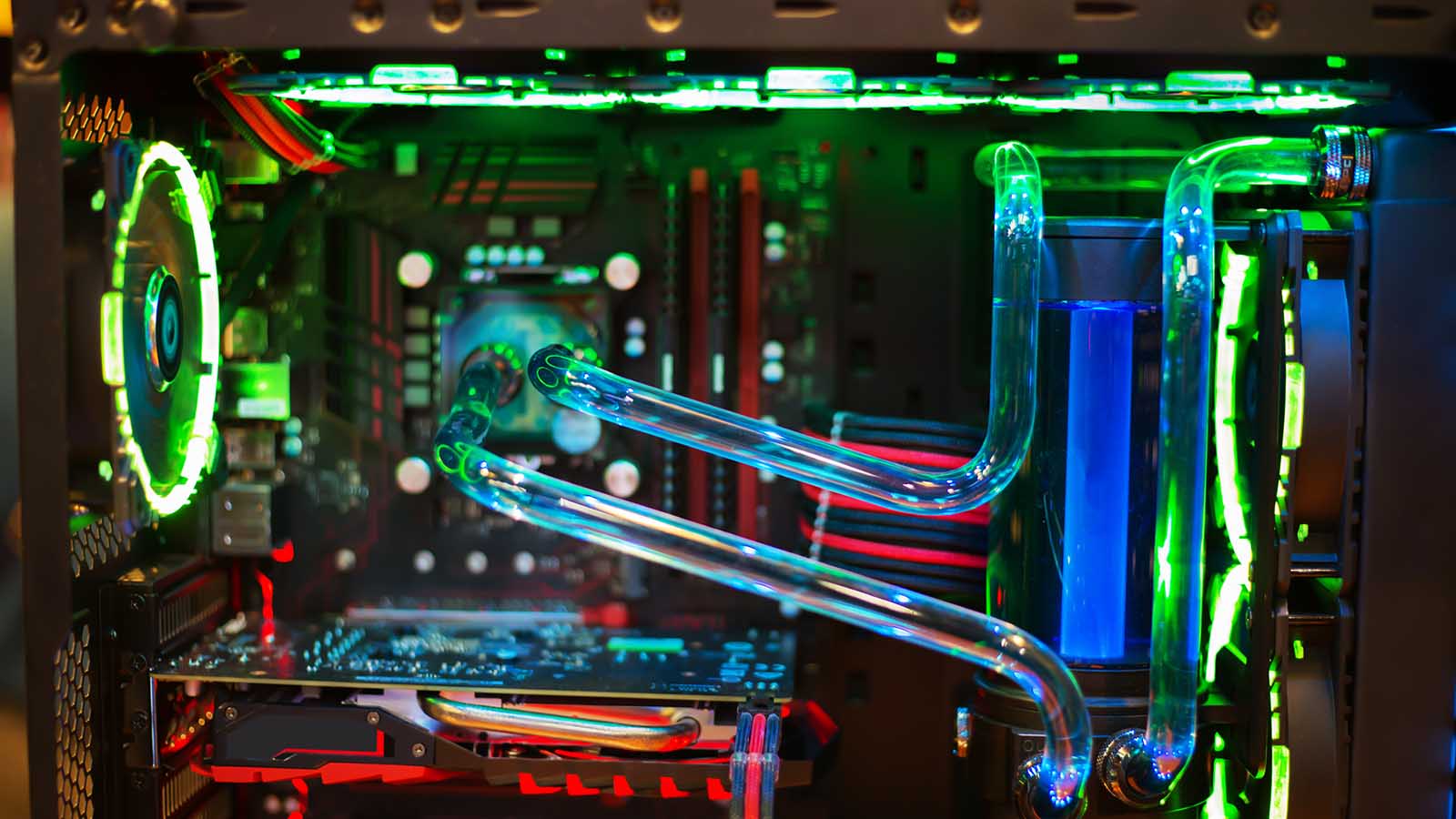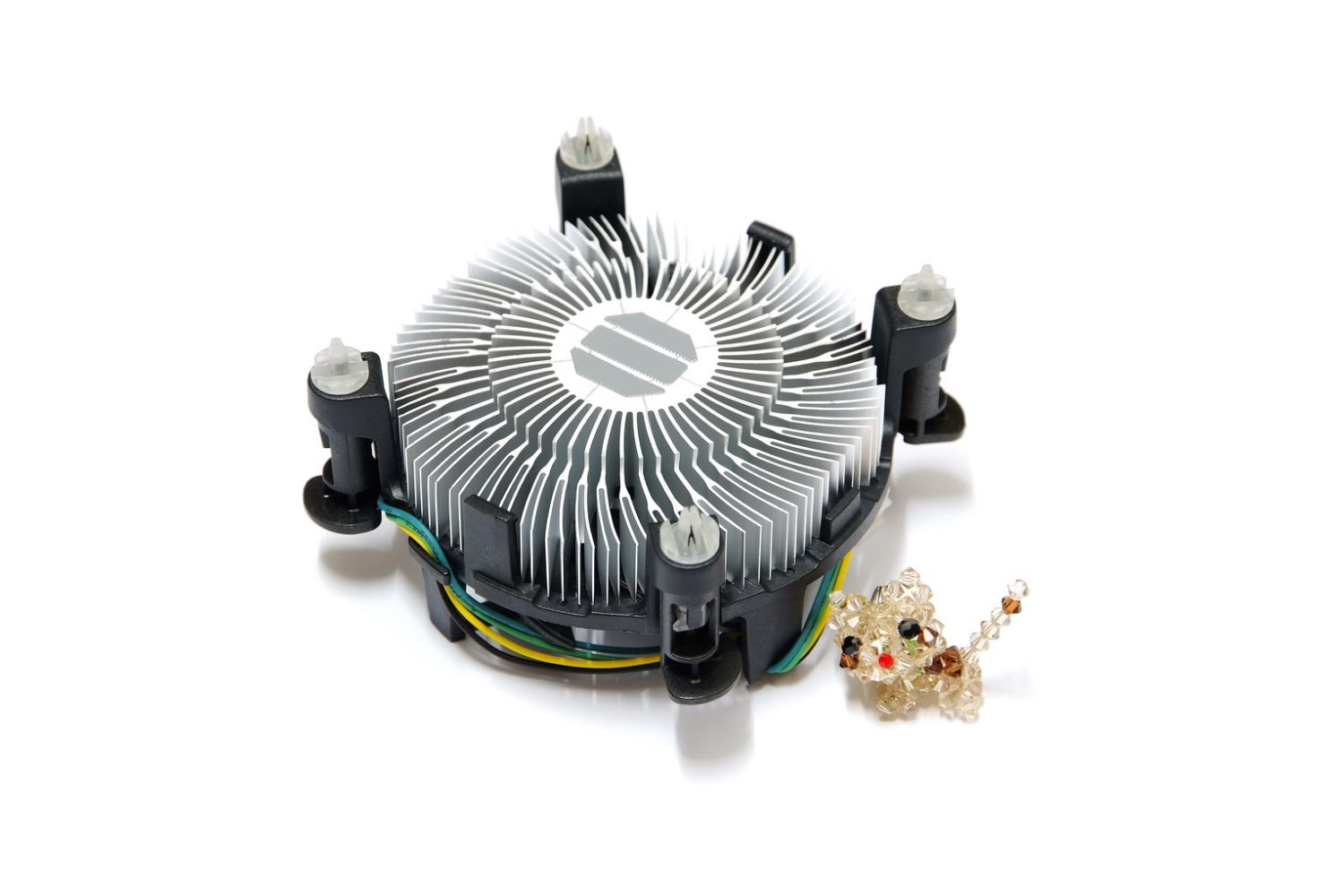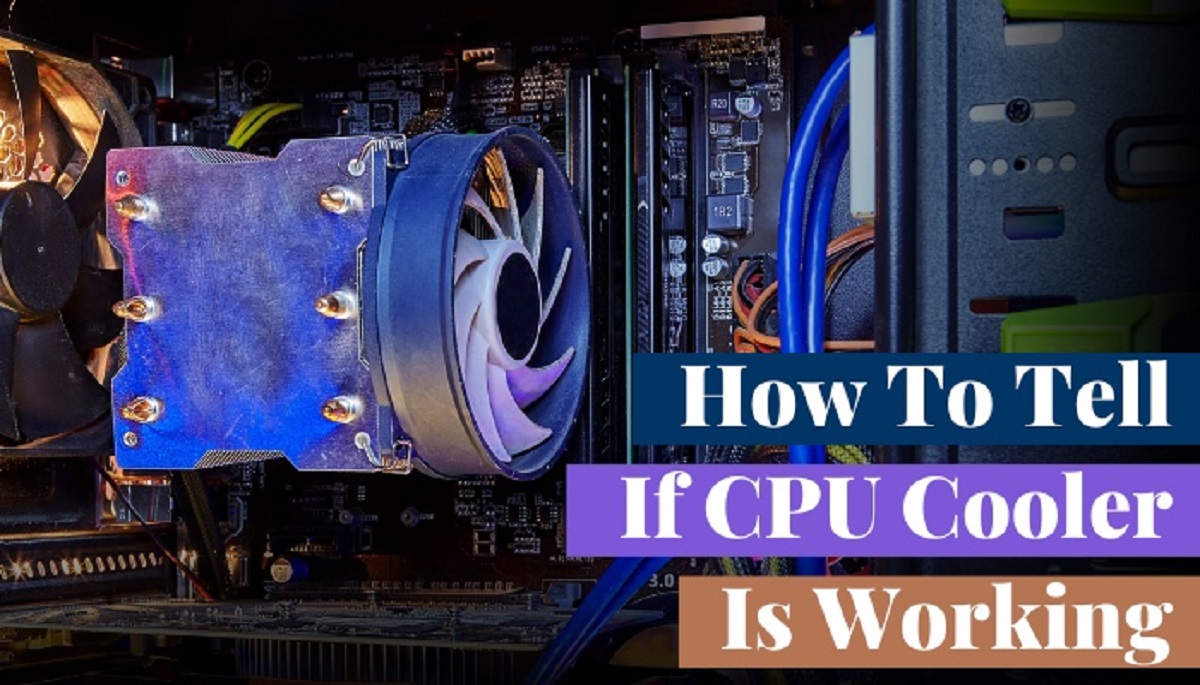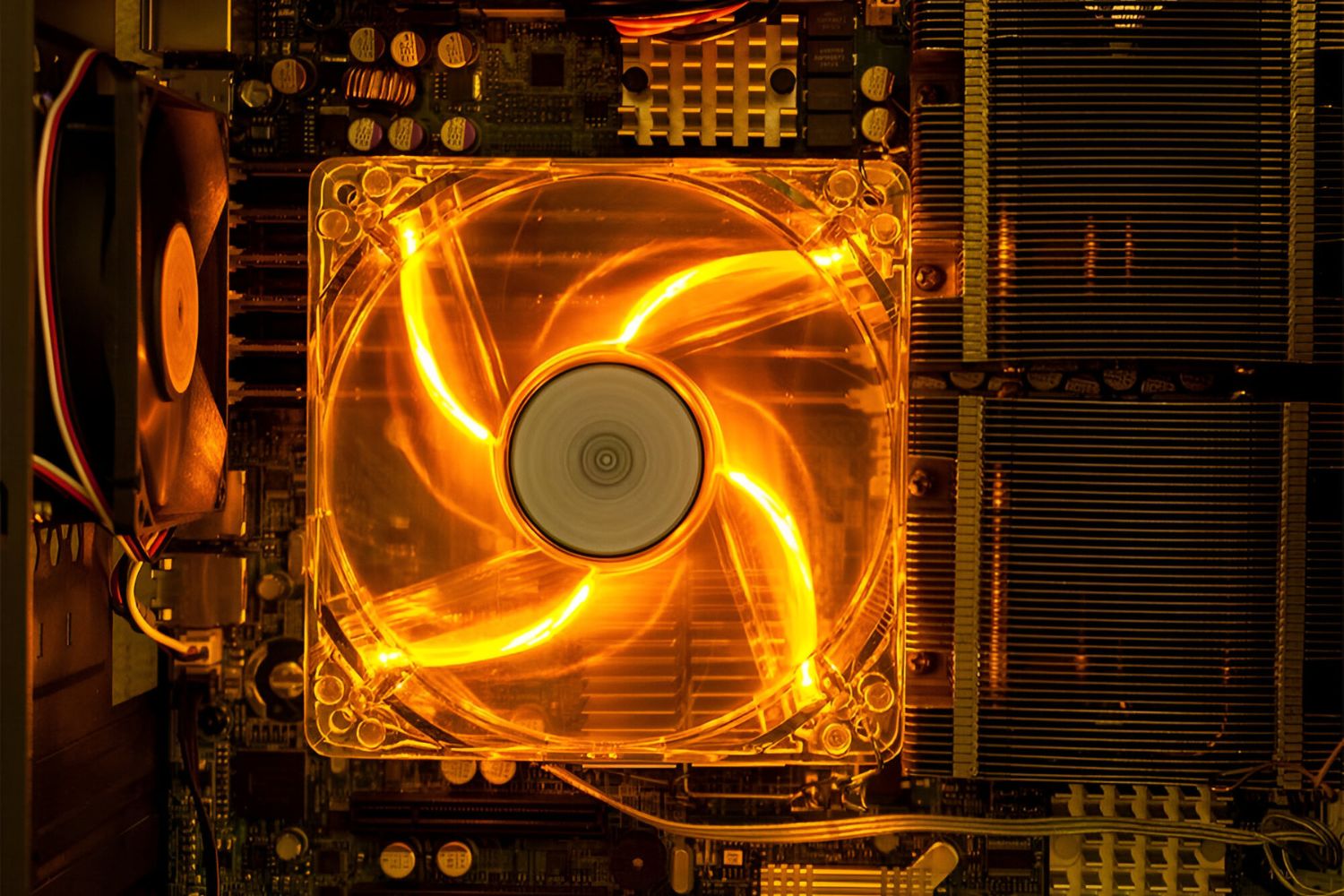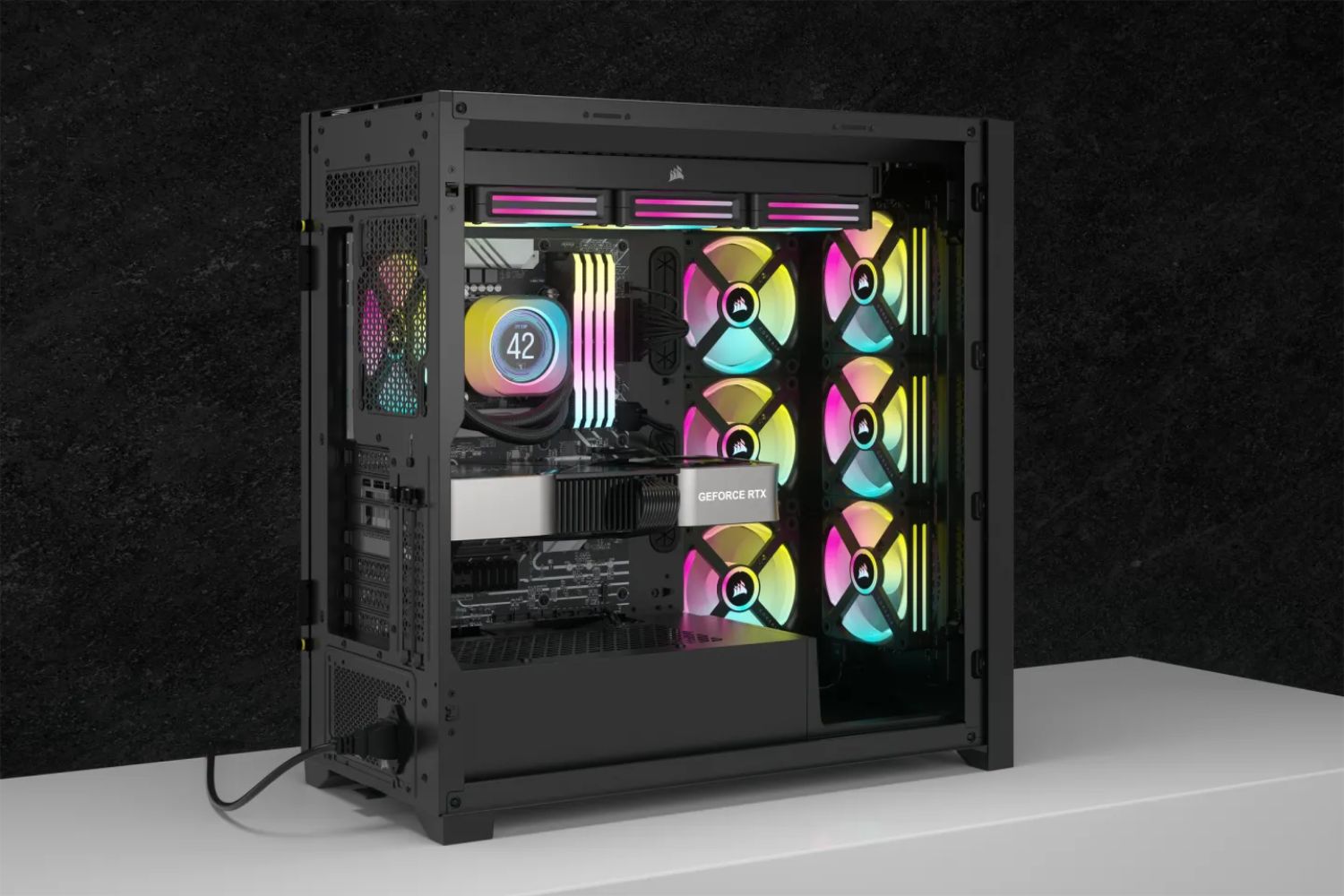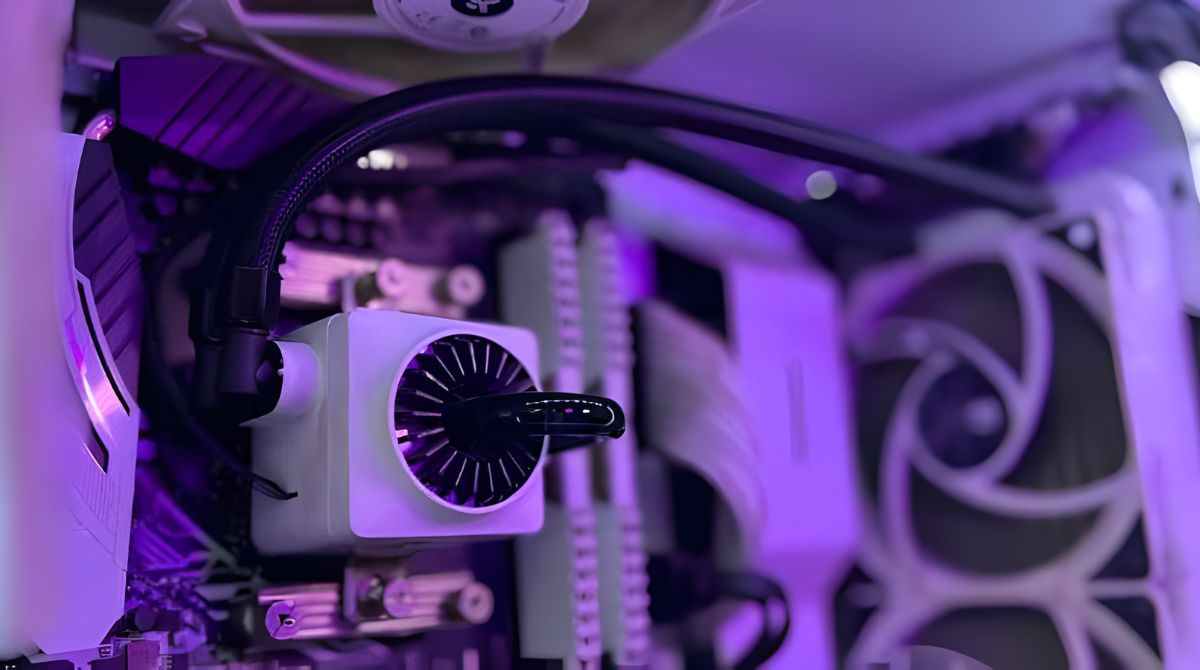Introduction
When it comes to maintaining the temperature of your CPU, a liquid CPU cooler can be a game-changer. By utilizing liquid coolant to dissipate heat, these coolers offer superior performance compared to traditional air cooling solutions.
However, if you’ve recently installed a liquid CPU cooler and want to ensure it is functioning properly, you may be wondering how to tell if it’s working. In this article, we will discuss several signs that indicate your liquid CPU cooler is functioning optimally.
It’s important to periodically check the performance of your liquid CPU cooler, as any issues can result in overheating and potential damage to your CPU. By being attentive to these signs, you can have peace of mind knowing that your cooling system is effectively managing the temperature of your CPU, even during demanding tasks such as gaming or video editing.
So, without further ado, let’s dive into the signs that can help you determine whether your liquid CPU cooler is working as intended. Keep in mind that these signs are not exhaustive, and it’s always recommended to consult your specific cooler’s documentation for accurate information about its expected performance.
Signs that indicate the liquid CPU cooler is working
1. Consistent temperature levels:
A properly functioning liquid CPU cooler should effectively regulate the temperature of your CPU, keeping it within safe operating limits. You can monitor the temperature using software such as HWMonitor or Core Temp. If you notice that the temperature remains stable even during intensive tasks, it’s a good indication that your liquid cooler is doing its job.
2. Audible pump noise:
A liquid CPU cooler consists of a pump that circulates the coolant. While some noise from the pump is normal, it shouldn’t be excessively loud or irregular. If you can hear a steady and consistent hum from the pump, it suggests that the cooler is functioning smoothly. However, if you notice any unusual sounds such as grinding or rattling, it may indicate a problem with the pump or fan that needs attention.
3. Coolant flow indicators:
Some liquid CPU coolers feature built-in coolant flow indicators. These indicators, usually in the form of transparent tubes, allow you to visually confirm that the coolant is flowing properly. When the system is working correctly, you should see a steady flow of liquid through the tubes. If there is no movement or the flow appears to be obstructed, it could indicate a blockage or malfunction.
4. Visual inspection of the radiator and fan:
Take a close look at the radiator fins and the fan attached to it. The radiator should be free from dust, debris, or any visible damage. Likewise, the fan should be spinning smoothly without any obstructions. A clean and well-maintained radiator and fan indicate that the liquid cooler is effectively dissipating heat.
5. No overheating issues:
If you haven’t experienced any instances of CPU overheating, it indicates that your liquid CPU cooler is doing its job. Overheating can cause system instability, crashes, or even permanent damage to your CPU. So, if your CPU remains within safe temperature ranges, it’s a clear indication of a properly functioning liquid cooler.
6. Software monitoring tools:
In addition to the mentioned software for monitoring temperature, you can utilize programs like AIDA64 or NZXT CAM that provide detailed data on fan speeds, coolant temperatures, and pump speeds. By observing these metrics, you can ensure that the liquid CPU cooler is operating at optimal levels.
Remember, the presence of these signs suggests that your liquid CPU cooler is functioning well. However, if you notice any abnormalities or suspect that your cooler might not be working as expected, it is always a good idea to consult the manufacturer’s documentation or seek professional assistance to address the issue promptly.
Consistent temperature levels
One of the primary functions of a liquid CPU cooler is to maintain stable and safe temperature levels for your CPU. A properly functioning cooler should effectively dissipate heat, keeping the temperature within a specified range.
To determine if your liquid CPU cooler is working as intended, you can monitor the temperature using various software tools. Programs like HWMonitor or Core Temp provide real-time temperature readings, allowing you to assess the performance of your cooler.
If you notice that the temperature remains consistent, even during heavy workloads or intense gaming sessions, it is a clear indication that your liquid cooler is doing its job. Consistent temperature levels indicate that the cooler is effectively transferring the heat away from the CPU and preventing it from overheating.
However, if you observe significant fluctuations in temperature, or if the temperature consistently exceeds safe limits, it may indicate a problem with your liquid CPU cooler. In such cases, you should check the installation, ensure that the pump is functioning correctly, and verify that the cooler is properly attached to the CPU.
It’s important to note that temperature levels can vary depending on factors such as ambient temperature, CPU load, and cooling system efficiency. Therefore, it’s essential to have a baseline understanding of what temperature ranges are considered safe for your specific CPU model.
Additionally, it’s worth considering that overclocking can significantly increase CPU temperature. If you have overclocked your CPU, it’s crucial to monitor the temperature closely and ensure that your liquid CPU cooler is capable of handling the increased heat generated by the overclocked CPU.
In summary, a liquid CPU cooler that maintains consistent temperature levels within safe operating limits is a strong indicator of its proper functionality. Regularly monitoring and analyzing temperature readings can help you identify any issues with the cooler early on and take appropriate steps to address them.
Audible pump noise
One of the key components of a liquid CPU cooler is the pump, responsible for circulating the coolant and facilitating the heat transfer process. Assessing the audible noise produced by the pump can provide valuable insights into the functioning of your liquid CPU cooler.
It’s important to note that some degree of noise is expected from the pump, but it should not be excessively loud or irregular. When your liquid CPU cooler is working properly, you should be able to hear a steady and consistent hum from the pump. This indicates that the pump is functioning smoothly, ensuring the proper circulation of coolant throughout the system.
If the pump noise becomes unusually loud, grinding, or rattling, it may indicate a problem with the pump itself or the fan attached to it. In such cases, it is recommended to inspect the pump and fan to determine the source of the noise. It is possible that there may be an obstruction in the pump or fan blades, or the pump may be malfunctioning. If you aren’t comfortable diagnosing the issue yourself, seeking assistance from a professional would be advisable.
It’s worth noting that pump noise can vary depending on the specific model and design of your liquid CPU cooler. Some high-end coolers are designed for quieter operation, using advanced pump technology to minimize noise. However, even with these quiet pump designs, there may still be a faint hum or vibration present.
To ensure accurate assessment of the pump noise, it’s recommended to carry out the evaluation in a quiet environment or with the computer case side panel removed. This allows you to focus on the specific sound produced by the pump without any additional noise interference.
Ultimately, the aim of assessing the pump noise is to ensure that it remains within acceptable levels and doesn’t exhibit any irregularities. A properly functioning pump is crucial for the efficient cooling of your CPU. If you suspect any issues, it is best to consult the documentation provided by the manufacturer of your liquid CPU cooler or seek professional assistance to address the problem promptly.
Coolant flow indicators
Some liquid CPU coolers come equipped with built-in coolant flow indicators, which can provide a visual confirmation of whether the coolant is flowing properly through the system. These indicators are typically transparent tubes connected to the cooler, allowing you to observe the movement of the coolant.
When your liquid CPU cooler is functioning as intended, you should see a steady and continuous flow of the coolant through these transparent tubes. The flow may appear as a slow and smooth movement or as small ripples within the tubes. Regardless of the specific visual representation, the key point is that there should be visible motion of the coolant.
If you don’t notice any movement or if the flow seems obstructed or stagnant, it could indicate a problem with the coolant circulation. This may be caused by a blockage in the tubes, a malfunctioning pump, or other issues within the cooling system. The lack of coolant flow can lead to inefficient heat transfer and inadequate cooling of the CPU.
It’s important to note that the appearance of the coolant flow may vary depending on the specific design of your liquid CPU cooler. Some coolers may have more elaborate flow indicators, while others may rely on simpler transparent tubes. Regardless of the design, the key is to verify that there is consistent movement or circulation of the coolant.
To accurately assess the coolant flow, it’s recommended to observe the flow indicators in a well-lit environment. You can also use a flashlight or other source of light to enhance visibility, making it easier to spot any abnormalities or lack of movement in the coolant.
If you suspect that the coolant flow is not functioning correctly, it’s advisable to consult the documentation provided by the manufacturer of your liquid CPU cooler. They may have specific troubleshooting steps or recommendations to address any flow-related issues.
Overall, monitoring the coolant flow indicators on your liquid CPU cooler can provide a quick visual confirmation of whether the coolant is circulating properly. If you notice any irregularities or lack of movement, it is important to investigate further and take appropriate actions to maintain the efficiency and effectiveness of your cooling system.
Visual inspection of the radiator and fan
When assessing the functionality of a liquid CPU cooler, a visual inspection of the radiator and fan can provide valuable insights into its performance and condition. By examining these components, you can ensure that they are clean, free from damage, and operating optimally.
Start by inspecting the radiator, which is responsible for dissipating heat from the coolant. A well-maintained radiator should be free from dust, debris, and any visible damage. Dust accumulation can hinder airflow and reduce the cooling efficiency of the system. Use a can of compressed air or a soft brush to gently remove any dust or debris that may have collected on the radiator fins. This will help ensure proper airflow and heat dissipation. It’s recommended to perform this maintenance regularly, especially if your computer is in a dusty environment.
Next, examine the fan attached to the radiator. Ensure that the fan is spinning smoothly and without any obstructions. Check for any signs of damage, such as bent blades or excessive dirt buildup. If you notice any abnormalities, it might affect the airflow and cooling performance. In such cases, you may need to clean or replace the fan, depending on the severity of the issue.
Additionally, check the fan speed to ensure that it is operating within the expected range. Most liquid CPU coolers have fan control options either through the motherboard’s BIOS or specialized software. Make sure the fan speed is set appropriately for your system’s cooling requirements. In some cases, you may need to adjust the fan speed settings to achieve the desired balance between cooling performance and noise levels.
During your visual inspection, pay attention to any signs of leaks around the radiator, tubes, or fittings. Leakage can indicate a problem with the cooling system and should be addressed promptly. If you detect any leaks or suspect a coolant leak, it is essential to discontinue use and seek professional assistance to prevent any further damage to your hardware.
Regular visual inspections are key to maintaining the effectiveness of your liquid CPU cooler. By ensuring that the radiator and fan are clean, undamaged, and operating correctly, you can maximize the cooling performance of your system and prevent potential overheating issues.
No overheating issues
One of the most significant indicators of a properly functioning liquid CPU cooler is the absence of overheating issues. Overheating can lead to system instability, sudden shutdowns, and even permanent damage to your CPU. Therefore, it is crucial to ensure that your liquid CPU cooler effectively manages the temperature of your CPU, keeping it within safe operating limits.
If your liquid CPU cooler is working as intended, you should not experience any instances of CPU overheating, even during demanding tasks such as gaming, video editing, or CPU-intensive applications. Your system should maintain stable and safe temperature levels under normal operating conditions.
To monitor the temperature of your CPU, you can utilize software tools like HWMonitor or Core Temp. These programs provide real-time temperature readings, allowing you to assess the performance of your liquid cooler. Keeping a close eye on the temperature can help you identify any potential issues early on.
It is important to note that the safe temperature range may vary depending on the specific CPU model. Consult the documentation provided by the CPU manufacturer to determine the recommended temperature limits. Typically, temperatures below 80°C (176°F) under load are considered safe for most CPUs.
If you consistently notice that your CPU temperature exceeds safe limits or if you experience frequent overheating issues, it could indicate a problem with your liquid CPU cooler. In such cases, it is recommended to check the installation, ensuring that the cooler is securely attached to the CPU. It’s also essential to verify that the fans are functioning correctly, and the coolant is properly circulating throughout the system.
In some cases, inadequate thermal paste application or an incorrectly mounted CPU block can also cause overheating issues. Ensure that the thermal paste is applied correctly and evenly spread on the CPU surface, and that the CPU block is making proper contact with the CPU.
If you are unsure about the cause of the overheating issues or unable to resolve the problem yourself, it is advisable to seek professional assistance. They can diagnose the issue, identify any potential problems with your liquid CPU cooler, and suggest appropriate solutions.
Remember, the absence of overheating issues is an essential sign that your liquid CPU cooler is effectively managing the temperature of your CPU, ensuring optimal performance and longevity of your system.
Software monitoring tools
In addition to visual and auditory cues, software monitoring tools play a crucial role in assessing the performance of your liquid CPU cooler. These tools provide real-time data about various aspects of your cooling system, including fan speed, coolant temperature, and pump speed.
There are several software options available that allow you to monitor and analyze the performance of your liquid CPU cooler. Some popular choices include AIDA64, NZXT CAM, and SpeedFan. These programs provide detailed information and can help you ensure that your cooling system is functioning optimally.
One of the key metrics to monitor is the fan speed. Fan speed is directly related to the cooling performance of your liquid cooler. It’s important to ensure that the fan is spinning at an appropriate speed to maintain the desired temperature levels. Too low fan speed may result in inadequate cooling, while excessively high speeds may lead to increased noise levels.
Additionally, software monitoring tools can provide data on coolant temperatures. Monitoring the coolant temperature is essential as it directly correlates to the cooling efficiency of your liquid CPU cooler. By keeping a close eye on the coolant temperature, you can identify any sudden fluctuations or abnormalities that may indicate a problem with the cooler.
Furthermore, some software tools can provide information about the pump speed. The pump plays a critical role in circulating the coolant efficiently. Monitoring the pump speed ensures that it is operating within the expected range, guaranteeing the proper flow of coolant throughout the cooling system.
By utilizing software monitoring tools, you can track and analyze these vital metrics, making it easier to identify any potential issues with your liquid CPU cooler. Any irregularities, such as abnormal temperature readings or fluctuations, can serve as indicators that further investigation or maintenance is required.
Remember, the availability and functionality of these software monitoring tools may vary depending on your specific liquid CPU cooler model and manufacturer. Check the documentation or official website of your cooler to identify compatible software options for monitoring and customizing the cooler’s performance.
Regularly utilizing software monitoring tools to assess the performance of your liquid CPU cooler can help you ensure optimal cooling efficiency, protect your CPU from overheating, and extend the longevity of your system.
Conclusion
Ensuring that your liquid CPU cooler is working properly is essential for maintaining the optimal performance and longevity of your system. By paying attention to various signs and indicators, you can determine whether your cooler is functioning optimally or if there are any issues that require attention.
Monitoring the temperature levels of your CPU is one of the key ways to assess the performance of the cooler. Consistent temperature levels under normal workloads indicate that the cooler is effectively dissipating heat. Additionally, paying attention to the audible pump noise can help identify any irregularities that may suggest a problem with the pump or fan.
Visual inspection of the radiator and fan is also crucial to ensure that they are clean, undamaged, and operating optimally. Dust accumulation or fan obstruction can hinder cooling efficiency, so regular cleaning and maintenance are essential.
Visibility of the coolant flow through built-in indicators is another important aspect to consider. Proper flow indicates that the coolant is effectively circulating within the cooling system, while the absence of flow may suggest blockages or malfunctions that need to be addressed.
Lastly, the absence of overheating issues and the use of software monitoring tools provide further assurance of the cooler’s effectiveness. Continuous monitoring of temperature, fan speed, and coolant temperatures can help you identify any abnormalities and take appropriate action promptly.
By being attentive to these signs and indicators, you can ensure that your liquid CPU cooler is working as intended, maintaining optimal CPU temperature, and safeguarding your system from potential damage. Regular maintenance, cleaning, and periodic checks will help prolong the life of your liquid CPU cooler and keep your system running smoothly.







